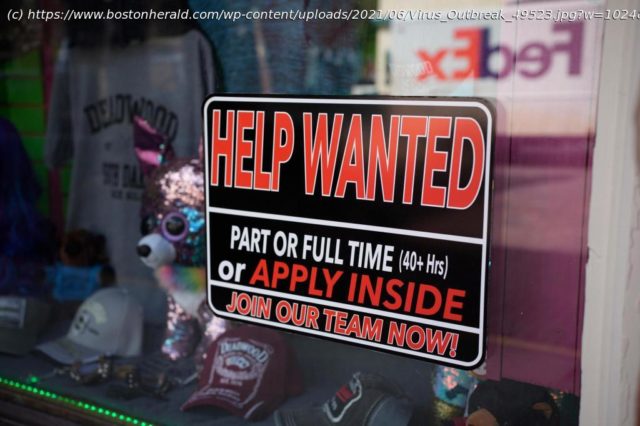WASHINGTON (AP) — Hiring in the United States picked up in May yet was slowed again by the struggles of many companies to find enough workers to keep up with the economy’s swift recovery from the pandemic recession.
By CHRISTOPHER RUGABER WASHINGTON (AP) — Hiring in the United States picked up in May yet was slowed again by the struggles of many companies to find enough workers to keep up with the economy’s swift recovery from the pandemic recession. U.S. employers added 559,000 jobs last month, the Labor Department said Friday, an improvement from April’s sluggish increase of 278,000. Yet the gain fell well short of employers’ need for labor. The unemployment rate fell to 5.8% from 6.1%. The speed of the rebound, fueled by substantial federal aid and rising vaccinations, has created a disconnect between businesses and the unemployed: While companies are rushing to add workers immediately, many of the unemployed are still holding back. Some of the jobless are likely seeking better positions than they had before the pandemic triggered widespread layoffs. Or they still lack affordable child care. Others still worry about contracting COVID-19 or have decided to retire early. And a temporary $300-a-week federal unemployment benefit, on top of regular state jobless aid, has likely led many unemployed Americans to take time to consider their options. That mismatch between employers and job seekers resulted in the sharp slowdown in hiring in April, when businesses added far fewer jobs than economists had forecast and many fewer than had been hired in March. The disconnect eased somewhat in May. But economists say it will likely persist until early fall, when schools reopen, COVID-19 fades further and federal unemployment benefits end. “There is a gap between the economy and labor market,” said Nela Richardson, chief economist at the payroll processing firm ADP. May’s job gains, she said, are “more lackluster than one would expect given the strong state of economic growth.” The May jobs report offered a number of signs that companies are trying harder to find workers. They’re offering more money, for one thing. Average hourly pay jumped for a second straight month, especially in the leisure and hospitality industry, which includes restaurants, bars, hotels and amusement parks. Hourly wages for all workers in that industry, except managers, were 6.4% higher in May compared with pre-pandemic levels — a substantial gain. And the number of unemployed who say their jobs are permanently lost declined in May by the most in five months. That’s an encouraging sign that companies are going beyond just recalling workers they had laid off in the pandemic.






